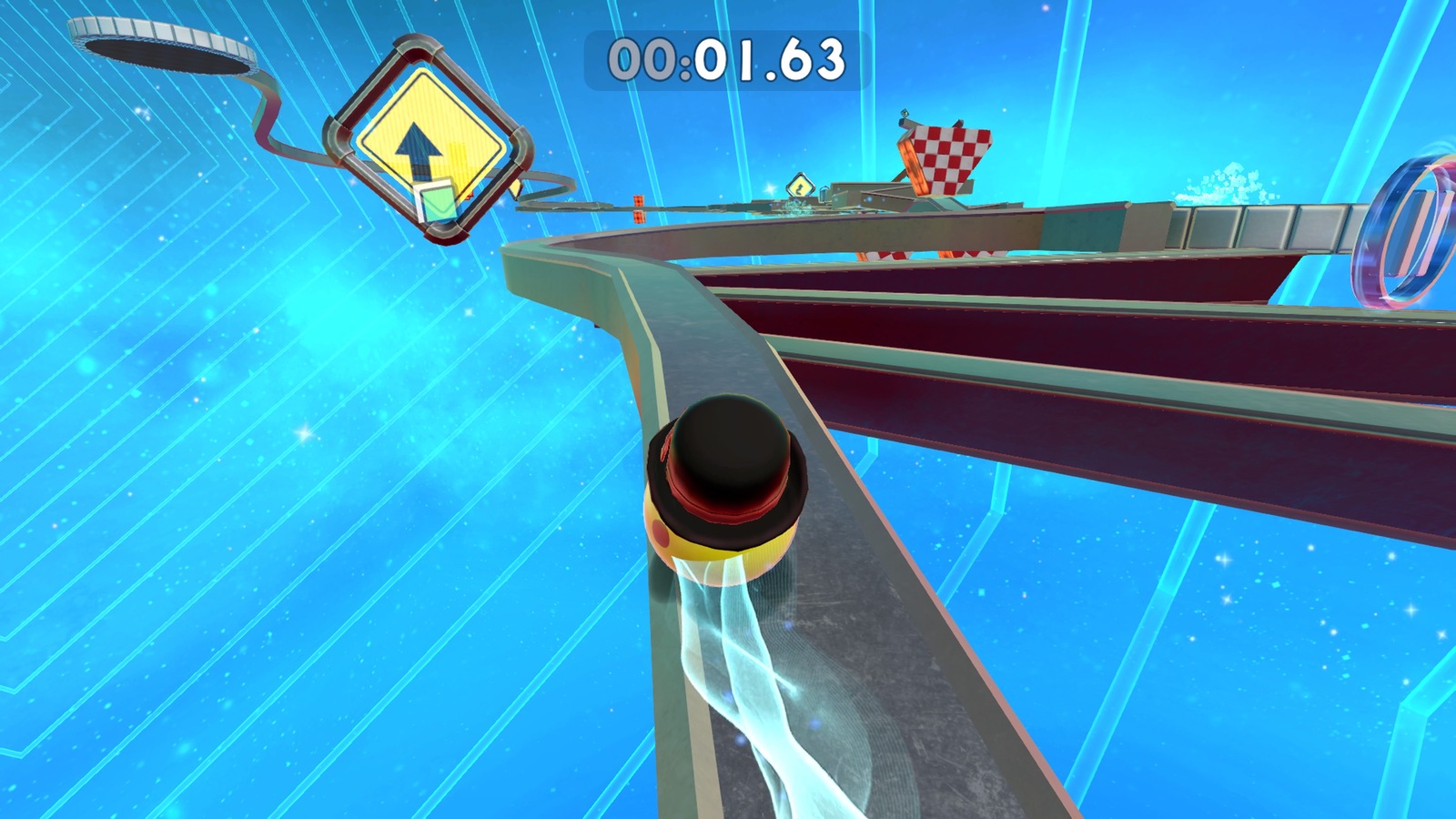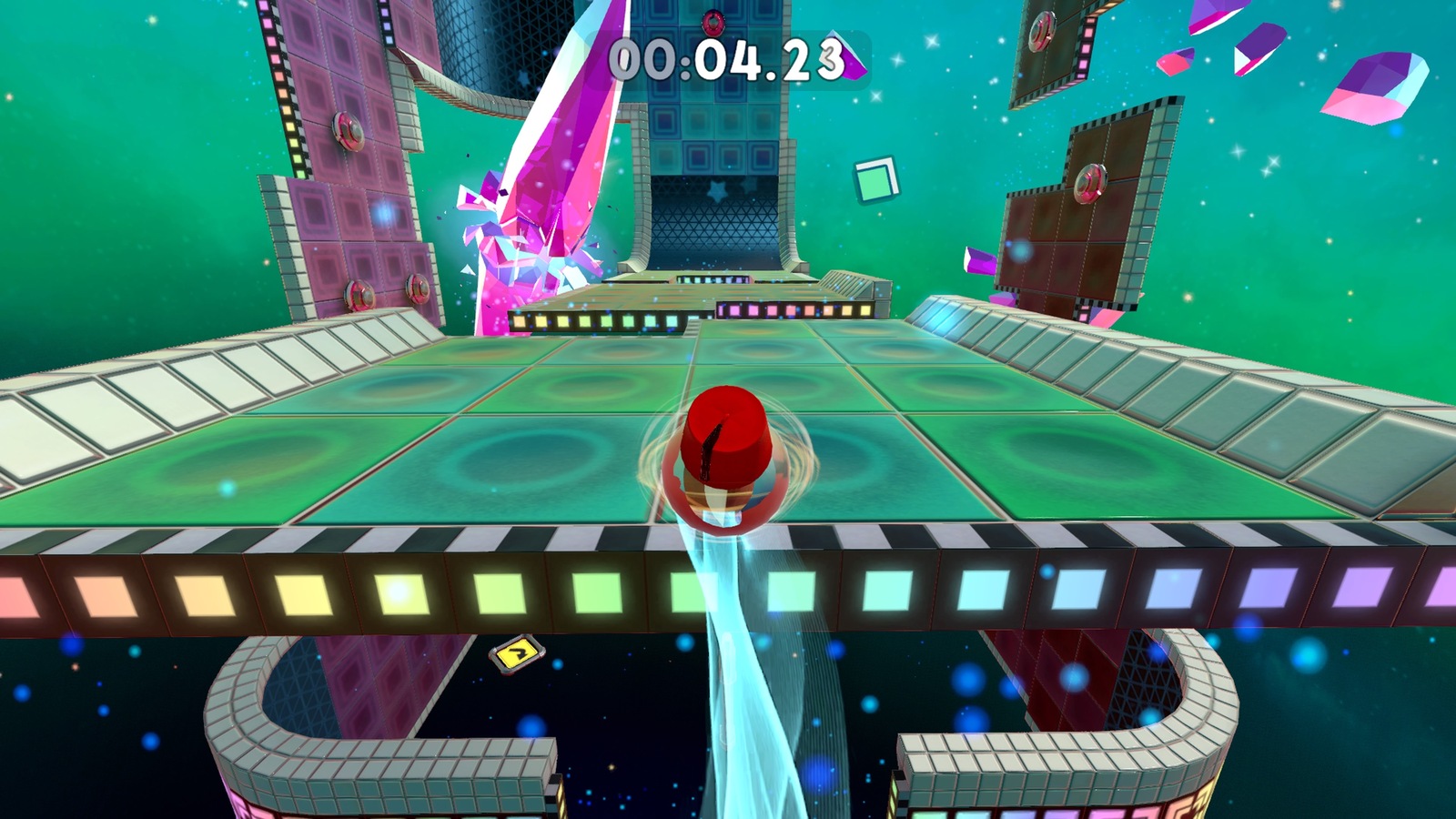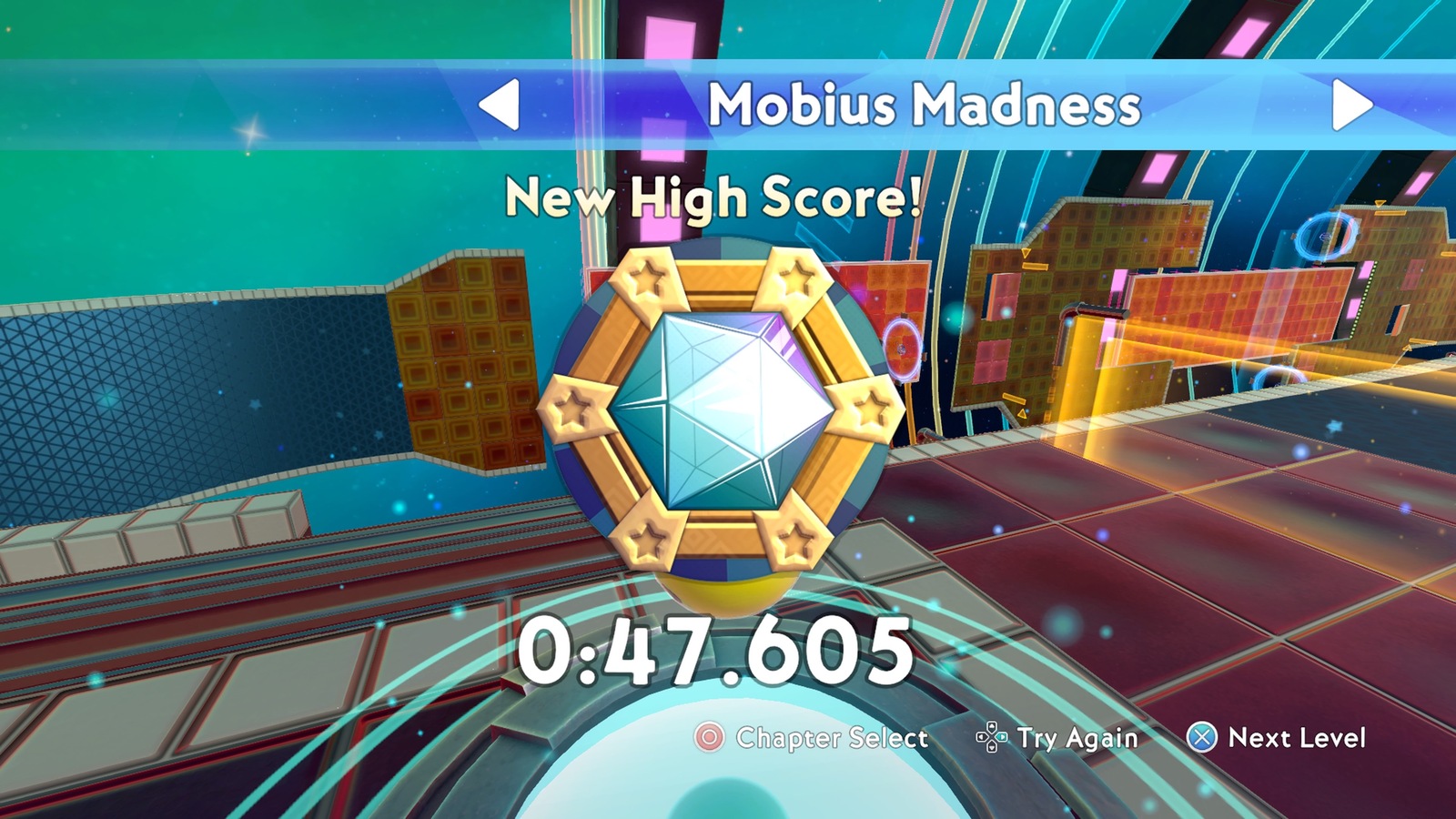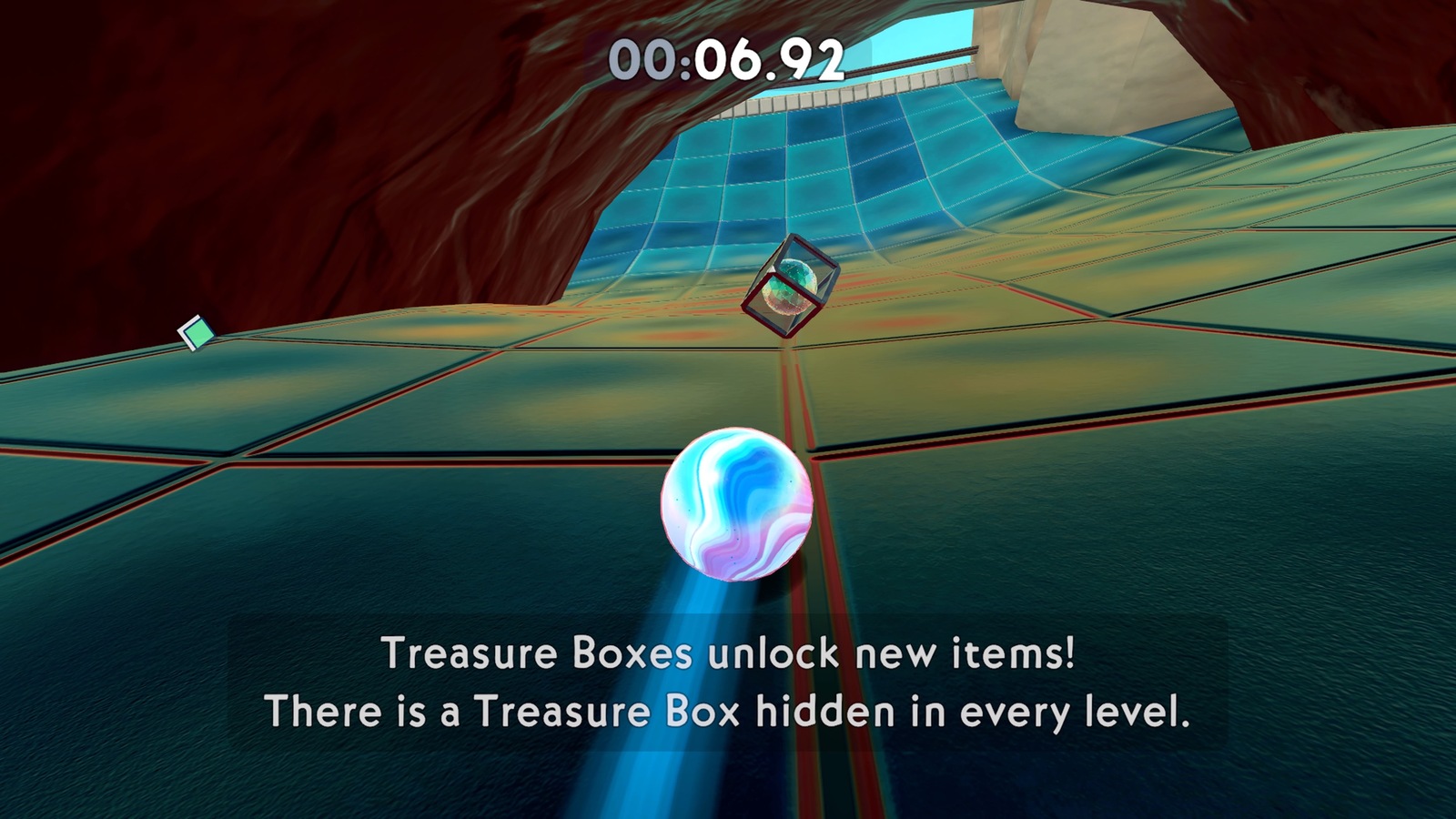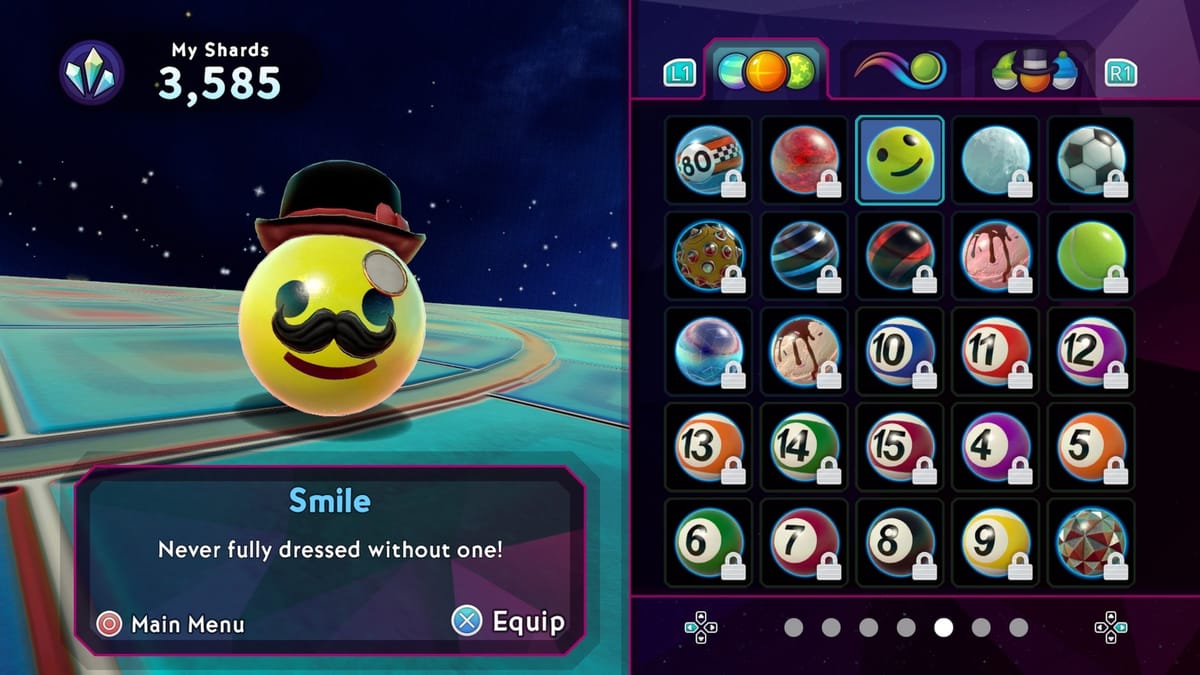
Society romanticizes the act of rolling. Just roll with it. Roll with the punches. Let’s get rolling. All of these phrases point towards one simple truth: the key to getting through life lies in your ability to roll. This principle also applies to enjoying Marble It Up! Ultra. At times, rolling brings great joy. More often, it brings frustration and despair. Rolling mixes chaos and control together, resulting in an engaging if frustrating combination.
Marble it Up! embodies the idea of controlled chaos. It is essentially a game all about recognizing what you can and cannot control. You can control a marble. However, you’ll often think to yourself “can I really control the marble?” while playing. As you push the marble towards your desired direction, it careens across the terrain in often unexpected ways. When the marble collides against a surface, it shoots out into directions you can scarcely imagine. You may control the marble, but you cannot control the world around it. This relationship defines what it truly means to roll.
Each level of Marble It Up! tests your ability to roll with new ideas and different terrain. Figuring out how to control the marble amidst the torrential forces of the world around you provides the core challenge of the game. The controls essentially act as your main antagonist, the obstacle to overcome. This premise entices with its simplicity and then traps you with its hidden complexity.
Balancing the challenge entirely around mastering the controls requires finesse equal to maneuvering the marble. If you grasp the controls too easily, the game fails to make an impression. If it proves too difficult, it risks driving players off the platform they were rolling on and away from the game forever.
While I hesitate to say that the challenge the marble presents holds up to scrutiny entirely, it rolls through relatively unscathed. Early levels lull you into thinking that perhaps marbles don’t have it so bad. You may need to occasionally slow down or navigate some tricky sections more carefully, but overall it’s a manageable existence.
More importantly, making these little adjustments is fun. The careful maneuvering taps into a simple, primal appeal similar to landing a scrunched up paper ball into a wastebasket or successfully parallel parking your car in a tricky situation. The tension…the precision… I certainly can’t imagine anything more exciting than stuff like that.
When the challenge inevitably picks up, however, the appeal gets fuzzier. Rolling a ball that reacts to the physics of the world around it technically resembles an intuitive concept. We observe similar phenomena every day of our lives. If you roll a real marble around a room, it reflects the marble in the game. Despite this, I would not describe Marble It Up! as an intuitive game. It’s one thing to observe a marble rolling around, it’s another to have to do the rolling yourself.
Basically, I never fully came to grips with the controls no matter how much I played. By the time I had completed all six “main” chapters of the game and moved into the bonus content, I still felt that occasionally, things would just happen.
I realize that “things” is rather nonspecific; I use that word because so much happens that you can’t help being nonspecific. Sometimes, your marble lands on a surface unimpeded. At other times, it bounces slightly. If you slow down around some corners, you can just barely eke out a turn. In other situations, any attempt to change the course of your marble will prove futile. These examples may not seem like a big deal, yet these little inconsistencies build towards an overall sense of unpredictability.
Technically, of course, these inconsistencies follow a consistent logic. If you move the marble or press a button in the exact same way in the exact same place, you will more than likely end up with the exact same result. The particular logic behind each reaction of the marble just happens to be difficult to parse to the point where it feels inconsistent.
Each level contains a ridiculous amount of variables both blatant and hidden. Rarely can you look at a level layout and know exactly how you need to move the marble based on the level design alone. You’ll frequently roll off a platform you didn’t expect to or accidentally land in a way that doesn’t make sense. The only real way to “figure out” how to control the marble in each level is to churn yourself through the marble grinder, trying again and again until you move the stick just right and hit buttons with the proper timing and intensity.
In a sense, that all makes Marble It Up! an obnoxious game to play. If I were to dump Marble It Up! into a genre, I’d say the closest bin would be a platformer. After all, your marble can jump. Platformers generally rely on rigid rules that are easy to understand, both in level design and game mechanics. The challenge comes from the act of executing on those rules. In Marble It Up!, the rules shroud themselves in ambiguity and the execution of them remains just as difficult as a more traditional platformer.
Marble It Up!’s reliance on speed further complicates the design. At its core, Marble It Up! wants you to go fast. If you hold any direction at the start of a stage, your marble will propel forward in an effort to literally get the ball rolling. Many levels outright force you into high speed situations with long funnels or slick surfaces that quickly push you towards super speed. Even in levels that don’t focus on speed, the all-encompassing metagame is that each stage provides multiple tiers of medals that are awarded based on how quickly you complete. An incentive to proceed without caution consistently hangs in the distance like a carrot on a stick, although I have no reason to believe that marbles would enjoy carrots.
Speed incentivizes replaying levels until you get things just right. This focus in turn changes how you approach the game as a whole. You can’t rely on running through levels slowly as practice for the speedruns because going fast changes the rules. Speedy tactics will result in different bounces, different strategies, and a different feel to the game as a whole. While I assume the intent of the developers was for players to take their time and build up their confidence, I couldn’t help but throw myself into the main challenge the game presents.
Alternatively, the game offers hidden items that you can find in each level that encourage a slower approach. Unfortunately, this inclusion does not come across like a legitimate style of play. These hidden items unlock cosmetics rather than new levels, and the more fast-paced stages do not fit neatly with a slower, more exploratory approach. In the world of Marble It Up!, speed is the undisputed king.
The speed-first focus works in tandem with power-ups to transform a game largely about precision into something much more chaotic. Occasionally levels will contain powerups that further alter your understanding of marble physics. High jumps, speed boosts, and the ability to float often create situations that will take more than a handful of attempts to comprehend. These power-ups add fun new dimensions to the game, but they also amplify the ambiguous nature of the marble mechanics.
Despite all the inconsistencies, I enjoy the experience overall. The inconsistency juxtaposes with the precision of the controls in an oddly satisfying way. Chaos becomes controlled chaos. While I ultimately prefer games with more intuitive rulesets, I appreciate what Marble It Up! accomplishes with its unique perspective on game design. It pushes the basic concept into a satisfying variety of directions that challenge your understanding of the game as a whole. The particular blend of ideas it offers works despite its tendencies to frustrate, and I suspect that for some people, even those potential pitfalls are exactly what they are looking for from a game like this.
As the Ultra in Marble It Up! Ultra indicates, this iteration of marble action hails from a long line of marbles that have been rolling since time immemorial. Or at least they’ve been rolling for about 20 years, starting with the Marble Blast games. Marble It Up! carries over many of those decades old ideas relatively untouched, primarily providing new playgrounds for players to interact with them.
This new Ultra iteration expands on the original primarily by adding more levels and more unlockable cosmetics. Outside of that, there are also some new multiplayer modes, which while an interesting complement to the controlled chaos nature of the game, will likely not draw in a huge audience. Marble games like this have a fairly extensive legacy of mods and custom levels to begin with (which for this game in particular are exclusive to the PC version), so while more content is welcome, this doesn’t strike me as a must-play expansion. Considering that Ultra is a free upgrade for existing Marblers, maybe that’s alright. If you’re like me and playing through all of the content for the first time, there’s more than enough to satisfy you.
Marble It Up
Good
Marble It Up! Ultra applies the theory of controlled chaos to platformer design. It doles out exciting moments and frustrations in relatively equal measure thanks to the ambiguous nature of its marble physics. This unique juxtaposition often proves likable even if it can occasionally be hard to love.
Pros
- Engaging challenge
- Incentivizes replays well
- The marble rolls really, really fast
Cons
- Ambiguous design can frustrate
- Ultra additions don't necessarily feel ultra

